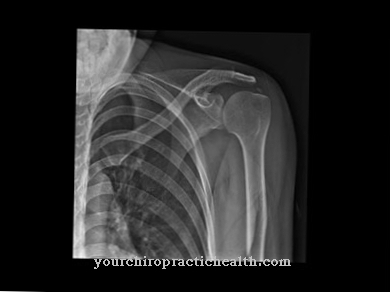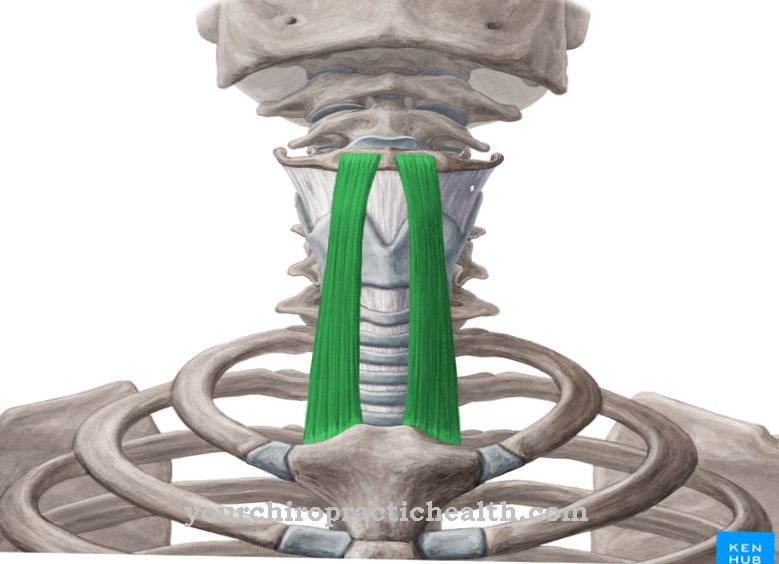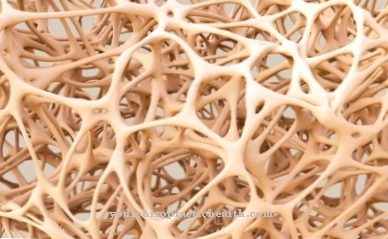Mycoplasma pneumoniae is one of the bacteria. The germ triggers u. a. atypical pneumonia.
What is Mycoplasma Pneumoniae?
The bacterium Mycoplasma pneumoniae belongs to the Mycoplasmataceae family. It causes various diseases, the first of which is atypical pneumonia. An otitis media, inflammation of the larynx, tracheobronchitis or meningitis can also be caused by the pathogen.
For a long time, doctors and scientists studying atypical pneumonia did not realize that Mycoplasma pneumoniae was a bacterium. So the mycoplasmas did not reach the size that was required for their visualization with the microscopes of the time. Bacterial filters also had no effect on the germs. For this reason, Mycoplasma pneumoniae was named "Eaton's Agent" at the time.
Occurrence, Distribution & Properties
Mycoplasma pneumoniae is unique to humans and is found all over the world. The bacterium is transmitted via droplet infection. Therefore, the germ spreads particularly in places where there is lively contact with the sick. These can be schools, kindergartens, children's homes, military facilities or shared apartments. Children between the ages of 5 and 15 are particularly affected by mycoplasma pneumoniae infestation.
With an average size of 0.1 to 0.6 µm, Mycoplasma pneumoniae is one of the smaller bacteria. The germ is endowed with both DNA and RNA. Although mycoplasmas are generally classified as flexible, their osmotic resistance is poor. Because they do not have a cell wall, they cannot be recognized by a Gram stain.
Treatments with beta-lactam antibiotics are also unsuccessful. These only develop their effect on bacteria that have a cell wall with a murein layer. The enzyme lysozyme, which occurs in the endosome, is also considered ineffective. Normally, the lysozyme attacks the cell wall of the bacteria, which leads to their destruction.
Mycoplasma pneumoniae has an altered metabolism, which is why it is unable to synthesize cholesterol. The bacteria therefore need cholesterol from the host cell in order to grow. Furthermore, the pathogen is equipped with special surface molecules. Although these are not pili, they can act as cytoadhesins to attach to the respiratory epithelium. There are pathogenicity factors such as special super antigens. These are B and T cell mitogens that induce cell division. In addition, oxygen radicals are formed, which damage the epithelium.
Due to their flexible external shape, the mycoplasmas are able to penetrate filters that bacteria cannot usually pass through. Mycoplasma pneumoniae can be grown in a laboratory. After about two to eight days, the germ creates a so-called fried egg colony.
Mycoplasma pneumoniae is considered highly contagious. Within the human body, the bacterium acts like a parasite and attaches itself to the epithelial cells of the lungs, which are known as cilia. Through certain protein structures, the mycoplasmum attaches itself to the mobile cilia and slides down their roots. This is where the pathogen begins to multiply.
Mycoplasma pneumoniae produces H2O2 (hydrogen peroxide). Since the hydrogen peroxide penetrates the cells of the ciliated epithelium, it can damage them. For this reason, mucus and other substances are only insufficiently removed from the lungs. In addition, the mycoplasmas make the human body's defense system more difficult and can also protect itself from it. In this way, the germs can survive longer. Mycoplasma pneumoniae also gets missing nutrients from the cilia.
Illnesses & ailments
Mycoplasma pneumoniae is not found in healthy people, but it can be easily transmitted, causing various diseases. Children in particular often suffer from atypical or interstitial pneumonia. In most cases, however, there is only a mild sore throat. A diagnosis is therefore usually not made.
After an infection with Mycoplasma pneumoniae, it takes about 10 to 20 days for symptoms to set in. These primarily include an excruciating cough with little sputum, fever and headache, with symptoms only progressing slowly.
As the disease progresses, there is a risk of atypical pneumonia. In contrast to conventional pneumonia, when listening to and tapping the chest, the doctor cannot hear any noises that would otherwise be heard in pneumonia. In some cases, however, there are only slight symptoms or even no symptoms at all.
In addition to atypical pneumonia, Mycoplasma pneumoniae causes other diseases. These are hemolytic anemia, tracheobronchitis, pharyngitis (inflammation of the throat), muscle pain and maculopapillary erythema.
Some serious neurological diseases can also occur. Doctors also suspect that there is a connection between Mycoplasma pneumoniae infection and bronchial asthma.
In order to detect Mycoplasma pneumoniae in the patient's body, material is obtained from the sputum or tracheal secretion. In addition, antibodies can be detected by ELISA or a complement fixation reaction (KBR).
Treatment of diseases caused by Mycoplasma pneumoniae is usually done by giving tetracyclines such as doxycycline. Children mostly receive macrolides such as erythromycin. On the other hand, cephalosporins or penicillin are not suitable for treatment because the mycoplasmas are not equipped with a cell wall.


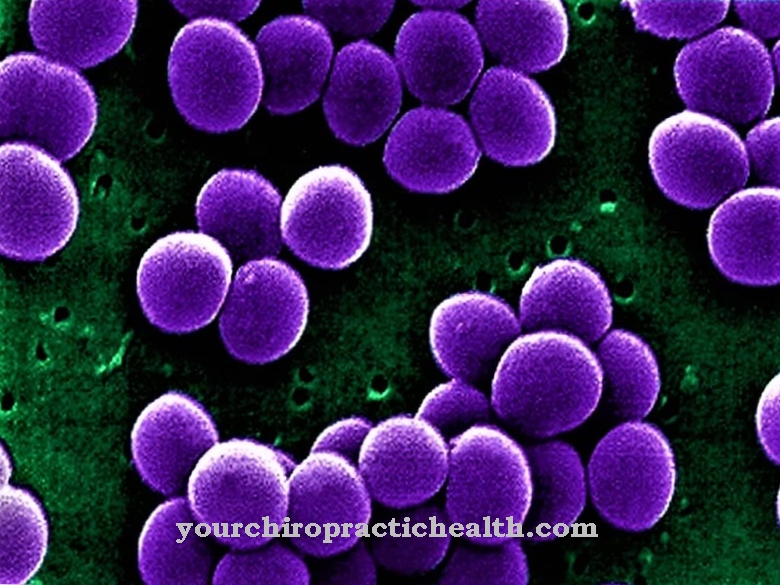
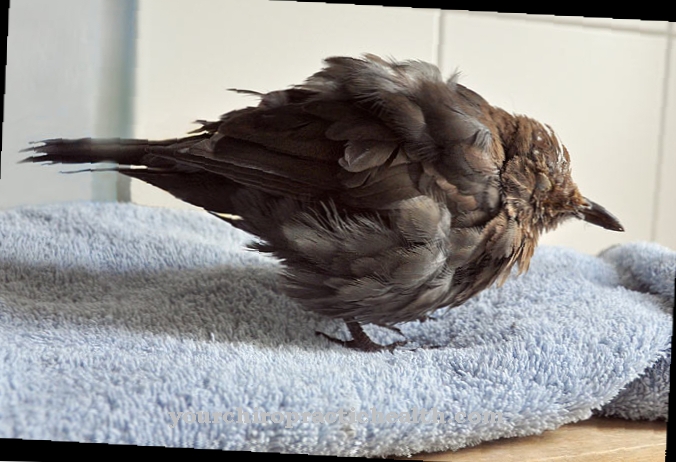




.jpg)





.jpg)


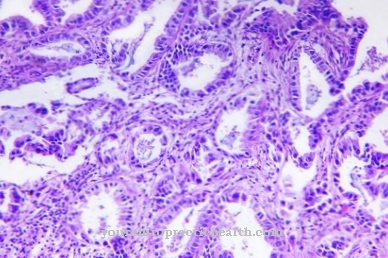



.jpg)

